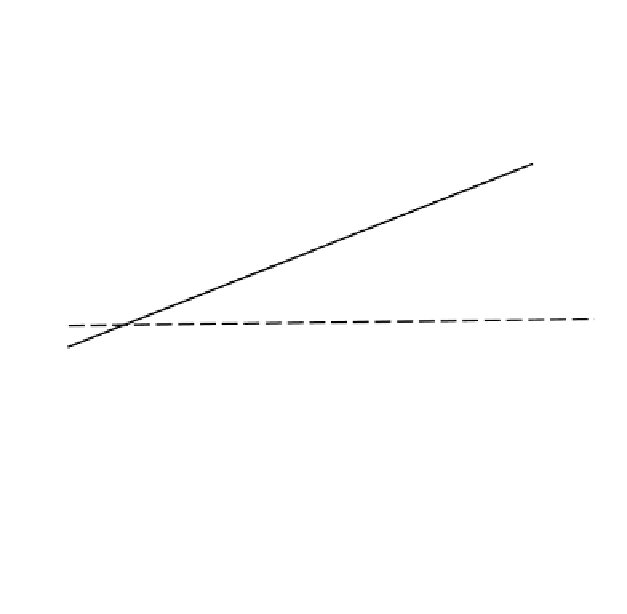Biomedical Engineering Reference
In-Depth Information
the slope of a line passing through two points lying on opposite sides
of the point at which the derivative approximated.
Backward
Forward
Exact
Central
x
i
x
i+1
i-1
i
i+1
i+2
x
Figure 5.9
Derivative.
It is obvious from Fig. 5.9 that some approximations are better
than others. The line for the central difference approximation has
a slope very close to the slope of the exact line; if the function
G
(
x
)
were a second-order polynomial and the points were equality
spaced in
x
direction, the slopes would match exactly. It is also
obvious from Fig. 5.9 that the quality of the approximation improves
when the additional points are close to
x
i
, i.e., as the grid is reined,
the approximation improves. The approximations shown in Fig. 5.9
are few of many possibilities; the following sections outline the
principal approaches to deriving approximations for the irst and
second derivatives. In the following two sections, only the one-
dimensional case is considered. The coordinate may be either
Cartesian or curvilinear; the difference is of little importance here.
In multidimensional inite differences, each coordinate is usually
treated separately so the methods developed here are readily
adapted to higher dimensionality.











































































Search WWH ::

Custom Search